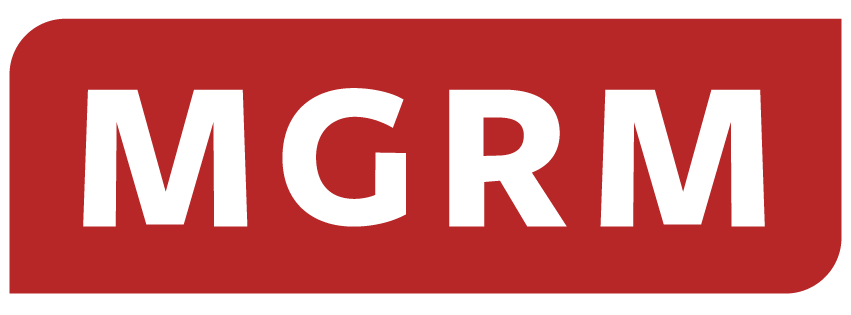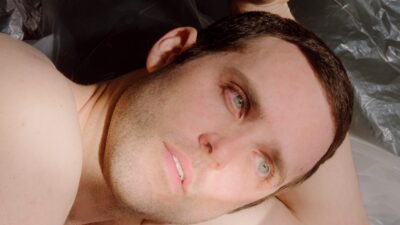All throughout my conversation with Downhaul vocalist/guitarist Gordon Phillips and guitarist Robbie Ludvigsen, they tell me how much they admire SEINFELD’s George Costanza. In their own words, working on their recently-released third album, HOW TO BEGIN, found them going “Costanza Mode.” The band’s new guiding philosophy is a reference to the season five finale “The Opposite,” where George Costanza decides to do the opposite of whatever he would ordinarily do in a given situation and ends the season (for the only time in the show’s run) employed, in a relationship, living on his own, and happy.
This lack of preciousness and more off-the-cuff approach to writing and recording is, in large part, what the band attributes to the stylistic differences between HOW TO BEGIN and PROOF. Over the course of the hour we spend talking, the word perfect comes up more than once, but Phillips and Ludvigsen are clear to never refer to HOW TO BEGIN that way. Instead, it’s a charge they level at their previous album, 2021’s PROOF, and never once is it a compliment. “We thought we optimized and scrutinized and revised—we thought that album was perfect,” Phillips tells me, in stark contrast to the looser process that led to HOW TO BEGIN, an album both agree is defined by “the imperfection of it.”
Even without having been present for those sessions, it’s clear what they mean. PROOF distinguished itself from the band’s previous material through its fuller, moodier sound; the album was far more ornate than anything Downhaul had done before, the gaps filled in with baritone guitar and lap steel, with more emphasis on atmosphere than immediacy. It’s both the most menacing and the most majestic Downhaul album to date. Phillips describes HOW TO BEGIN as a “back-to-basics album” before catching himself, noting the implications of that phrase: That things were better back then; that they’d lost their way; that they’re regressing.
—
When Downhaul first began gaining steam, fans and critics tended to refer to them as either emo or alt-country. To be quite honest, neither really made a ton of sense; Phillips notes that when he formed the band he was going for “early 2000s indie punk,” a sound closer to The Weakerthans or Jets to Brazil, both more sensible comparisons (the mix reference for HOW TO BEGIN was “Sun in an Empty Room”). On this album, though, the alt-country tag isn’t terribly far off—although the band didn’t go into the studio with the intention of writing their ST. CLOUD or BOAT SONGS. To hear it from them, it was a natural consequence of trying to follow a record as dense and intricately mapped out as PROOF.
When that record didn’t get the reception they’d hoped for, Ludvigsen explains, it dawned on them that “we don’t have all the answers.” They discussed continuing farther down that path, getting longer, weirder, moodier, but after PROOF and last year’s concept EP SQUALL, comprising four songs in the same key that flow into one another, they wanted to go simpler.
They also attribute some of the change in sound simply to circumstance: HOW TO BEGIN is their first release without original bassist/vocalist Pat Davis. When Davis left, the remaining three members—Phillips, Ludvigsen, and drummer/vocalist Andrew Seymour–considered calling it quits; when they found bassist/vocalist Chandler Brooks, it felt like a rebirth, especially sonically. For starters, unlike Davis, the Georgia-born Chandler plays bass fingerstyle and has a background in jazz. “He has a whole different set of influences from Pat—and from me and from Andrew and from Robbie,” Phillips notes, which gives his playing a distinct flavor. As a case in point, he notes that “the bass part he put on ‘Sinker’ is very country. It has a bounce to it.”
But he’s quick to add it isn’t just Brooks bringing in new influences: “Your own interests and tastes change so much, and not just the substance of the song, but the production. You think, ‘Oh, I love layers of guitars and each vocal part needs to be double-tracked.’ Every single vocal on the third EP is doubled. Chris [Teti] would do some doubling, so BEFORE YOU FALL ASLEEP and PROOF have a lot of layering of the vocals. But on this record, nothing is layered, nothing is doubled. It’s one guitar on the side, vocals right down the middle.” Ludvigsen, in particular, is working differently, Phillips says: “I think Robbie’s listening habits, the way he’s playing lead guitar, is different now.” For his part, Ludvigsen agrees, having favored a cleaner guitar tone for HOW TO BEGIN ever since writing began rather than relying on overdrive or distortion.
—
Part of the goal for HOW TO BEGIN was to write songs that would sound good on just an acoustic guitar; in the past, Downhaul had to turn down chances to play acoustic sets because it simply was not feasible to pull off their older material in that type of setting. “Rootbound” was a bit of a test case, having originally appeared on Phillips’ 2022 solo LP, SEASONAL, as an acoustic dirge. The plan was always for that song to become a Downhaul track, and Phillips liked it enough to include it on his solo album; the band even considered including it on SQUALL.
That’s probably the song that would’ve fit best on one of the previous LPs, or “Cold in the Morning,” which calls back to the darker, claustrophobic vibe of PROOF, a reminder they could’ve just as easily turned in PROOF 2. It’s impressive how well that song fits sandwiched between the rootsier “Tired of Trying” and “Sleep in the Sunroom,” a last backwards glance into the dark before the album’s final moments; “Sleep in the Sunroom,” in particular, is probably the album’s catchiest, sunniest track (sorry). That stretch does well to illustrate the boundaries of HOW TO BEGIN.
The songs are also shorter than before; “Solstice,” clocking in at just over three minutes, is the longest song here by a good deal, and was in its first form five minutes long. Nearly every track on HOW TO BEGIN was cut at least in half. Single “Sleep in the Sunroom,” for example, was originally over four minutes, and now is barely two. The embellishments—the intros, the extra verses, the outros—just didn’t serve these songs, Phillips says, and in the past the band might’ve been hesitant to put out a ten-song, 25-minute LP; both Phillips and Ludvigsen acknowledge that the shorter length might’ve been a mistake, but they also acknowledge that Constanza mode demands they move forward with no fear.
The clearest effect of that new mindset is visible even before pressing play on the album—their original tracklist was entirely different. From writing to mixing, HOW TO BEGIN was set to open with the southern rock swing of “YCBTT” into the breakneck “Off and On,” and eventual single “Solstice” was the planned final track. They sent an early version of the album to Dazy’s James Goodson, who moved “Blue Flame” from track three to the opening slot, shuffled the middle run around, moved “Solstice” to the front half, and bumped “Branch” from penultimate track to closer. Then Maxwell Stern—who also contributed artwork—flipped “Sinker” and “Off and On,” and when the band heard what their friends had done, they realized this was the way HOW TO BEGIN was meant to flow. “It’s good to have really talented friends,” Ludvigsen adds with a smile.
It’s a good thing they settled on Goodson and Stern’s revised tracklist. The way it is, the album ends on the plaintive “Branch,” a song that would feel out of place anywhere other than in the very last spot. At 2:48, it’s one of the longest songs on HOW TO BEGIN, and it’s a song bisected by a drawly, meandering guitar line that comes in after about a minute to give the track some life. Just before Ludvigsen comes in with that riff, Phillips crows that “easing off your dreams will make space for new ones.” Every previous Downhaul closer ends its respective album with the band looking up, knowing they have the strength to surmount whatever obstacles lay ahead of them. “Branch” is the first one that takes place after the climb, the first one where they’re speaking from experience instead of from optimism. It’s the only way HOW TO BEGIN ever could’ve ended, because it’s the first album that sounds like Downhaul’s given themselves the room to make up new dreams.
















Comments